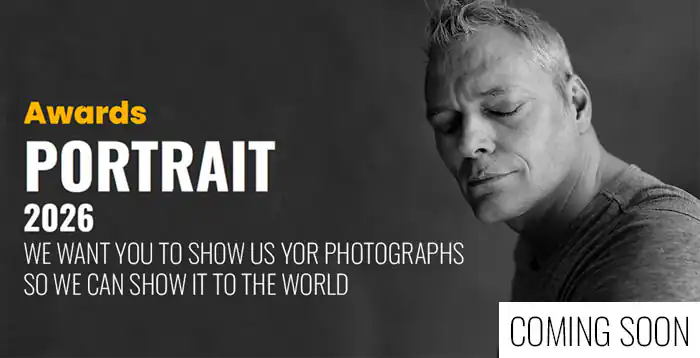Our sense of sight guides our life. We touch, taste, listen and even feel with our eyes. Our entire economy and statecraft are dependent on it. Which business brand does not depend on our sense of sight? Which politician is not cued on optics?
Even hearing aid designers pay attention to sight. It was only natural that we serve to this sense, almost entirely. Our sight is a discernment apparatus, a selection mechanism, in every aspect of our existence, including our emotions.
Don’t we emote upon seeing a loved one’s picture who had vanished? Therefore, the pursuit to record and retrieve had been the holy grail since the cave paintings of prehistory. But, not till 1822 did we succeed, crudely of course, in recording an image to retrieve it later. The first ever recorded image was called “View from the window at Las Gras,” by Nicephore Niepce (1765-1833), the inventor of photography.
The only culture that could have invented photography – had to be the French! Why? The answer is rather simple, it’s a culture constituted of voracious readers, with vivid imagination.At the inception of the 18th century, the age of reason and enlightenment – they, the readers, were fed by the imaginative, inventive and activist literary figures like Montaigne, Rousseau, Hugo, Balzac, and Voltaire. Writers, that with words, caused revolutions and political upheaval, and were the first celebrities of entertainment. They provoked, and induced action. Is it surprising that Nicephore Niepce and Louis Daggeurre were the products of such a culture? The French, appropriately enough, through such men, invented another way to read, visualize and record, in an entirely new medium: photography. If Niepce had sketched the initial idea, Daggeurre filled in the shading! However, Daggeurre was accused, by the guardians of Niepce legacy, of appropriating the first inventor’s credit.
We take, almost everything for granted – even the miracle of life. Down on the totem pole, photography is no different. The proposition that photography gestated in some earthly concoction by the trial and error of man, made up of cosmic elements may seem incredible – does it not? But, it’s true. Think about this, humanity in general, and specifically, the observant and perceptive, in the centuries past, had seen things they wanted to record, but couldn’t – and could only explain or render from memory, in words or in sketches, mere impressions. Painters had flourished since prehistoric times – and, painting was the ancient form of photography, laborious and time consuming. Contrast that with our impatience to release the shutter today!
A-hundred-and-ninety-six years ago, an intrepid and relentless polymath, Nicephore Niepce, tried a mixture of elements, one being silver nitrate, into an emulsion, and spread it over a flat surface and exposed it to light through a narrow aperture, and voila! he had an image, in high contrast, without much of a tonal scale, but an image nevertheless, that appeared to be a film of soot or the powdery scales of butterfly wing, delicate impression sketched by light. Within twelve years, in 1833, another such man, a theatrical director, Louis-Jacques Daggeurre (1787-1851), refined the exposure emulsion and applied it to a flat copper plate, and took what technically was hailed as the first real photograph that captured people, titled: ‘Le Boulevard du Temple, Paris’ – taken at 8 am. That was the dawn of modern photography.
The first photograph, by Daggeurre, is not only an aesthetically charged perspective of a neighborhood, a cityscape, but, the first to reveal our fundamental urban condition, a transaction between two human beings, the seller: a shoe shiner, and the buyer: the man getting his shoes shined. His first photograph offered, serendipitously, a phenomenal perspective on the potential and possibilities of photography, almost two hundred years ago! It pointed to a whole new psychographic threshold – the rabbit hole of our individual and collective psychology, and medical diagnosis, in the form of portraiture, radiology and fiber optic imaging. Daggeurrue’s astonishing photograph, has it’s own biography, worthy of a telling.
In January of 1939, Daggeurreotypes became the first exhibited photographs. They also were the first to be praised for their continuous tonality, depicting reality, something never seen before. The prints were basically silver-emulsion sheets of copper, directly in the camera behind the aperture. It was a 10-15 minutes exposure, taken from his window, in his “Diorama” theater-studio. One of the three prints was framed and presented by Daggeurre to the king of Bavaria, Ludwig I, in 1839. It was the first ever photograph to depict two social classes, one rich, the other peasant, poor – a deep social inequality that rattled France in series of political purges.
The photographer, focused so intensely on the operation of the rudimentary apparatus, that he probably never noticed the two men in a transaction – till, the mercury vapors revealed them like some distant thespians, materializing from a cloud of steam, on the stage of a social theater, showcasing the age old contention of the unequal.
The tantalizing and arresting irony is that Daggeurre’s seminal photograph, unequivocally, the most celebrated, was saved, from disappearing completely, by a rival’s invention: William Henry Fox Talbot’s process of the negative, before print. A hundred years later, the gift to the king of Bavaria, housed at the Munich museum, somehow survived World- War II. Then, after the war, the surreal combination of deathly folly and good intentions metastasized into a disaster – the thin film of the sooty-powdery image, was wiped clean, unwittingly, by a museum attendant, in the act of, well, cleaning. Beaumont Newhall, a photo-historian was the savior. He had, fortuitously, commissioned a high quality negative, only days before the accident, for a forthcoming exhibit at the MoMA – Museum of Modern Art in 1947.The singular original plate is blank, but, Talbot’s replication process sustained Daggeurre’s astonishing magic of that summer morning in Paris, almost two hundred years ago! Early 18th century photographs were referred to as Daggeurreotypes (1839-1855). Ambrotypes arrived in the 1850s, and Tintypes in the early 1860s. Both used variations of “Collodion wet plate process,” which, under glass could not be distinguished. In the case of the latter, emulsion was applied to iron-tin plates for exposure, the reason why they were referred to as Tintypes. From there it went onto film, eliminating the glass negatives. Some purists still keep this process alive. This emulsion process lasted for almost a hundred-fifty years, till it was wiped out by an electronic protocol of recording the image onto a memory card. And, despite this electronic instantism – the delicious delay in creating just one photograph at a time, hundred-and-fifty years ago, was akin to an artist painting in his studio — a contrast, between the quill and the word processing software. Which do you think is resonant, aesthetically?
Today, we shoot almost 2 billion images with our smart phones and cameras every day! They are recorded on a memory flash drives, inside of our gadgets, that can be transferred or erased. Quantity had always been the bane of quality. A mere hundred-twenty years ago, this process of just acquiring an image was not only a tiresome process, but needed cumbersome equipment, often rudimentary, and a great amount of investment. Perhaps, this is why most photographs from that era have become accidental masterpieces, considering the degree of difficulty in producing an image. Nevertheless, the concept of capturing permanently, what we saw at the moment, to see it again at a later date, had come to light, almost like our diabolical desire for flight.
What was the motivation in capturing and retrieving what we saw? Were the cave painters interested in recording, accuracy, creativity or immortality? The replication of reality had been one of the central pursuits, since the dawn of mankind, and the answer is in several psychological facets. The first attempt had been to record accurately, from memory, to the purpose of sharing our common condition. The second, was to embellish our surroundings, our abodes, to enjoy and feel fulfilled in our individual creativity, culling that aesthetic instinct – the oldest internal selection mechanism. And finally, the desire to leave something behind, in the hope of immortality, a gigantic psychological component in every individual, as well as the collective.
How important is photography? Think about this – Elizabeth, somewhere in the 16th century, experiences a great October sunset from a promontory – she wants to share it with her old dad. But to share her wondrous experience, she has to drag him to that promontory, but she can’t, he cannot walk. See the bridge? Yes, the photograph is that bridge that connects Elizabeth to her dad without the sweat and tears. It’s a bridge that brought the past to the present, and today, from moment to moment. It took a thirty-thousand years of impressions, in the form of drawings and paintings, from caves to canvases, to arrive at the threshold in 1822, when the proverbial window was pried open by Niepce, then, completely opened in 1833, by Daggeurre.
Photography gestated for a long time, but once it was delivered, in the early to mid 19th century, the reliance on it simply exploded. History was now available in disquieting clarity, in hindsight. The first human catastrophe ever to be recorded with astonishing tonality on glass plates, was the American Civil War, by Mathew Brady, Alexander Gardner and other unknown photographers. Today, photography is ubiquitous and pervasive, in every aspect of our existence, from the sciences to our entertainment. It facilitated the study of Vermeer’s painting as an object, to a film showing how he had painted his masterpiece, “A girl with a pearl earring,” from the first photograph of flight to the images of earth from deep space, and from plumbing the depths of the Marianas Trench to our own psychological abyss. Photography became indispensable, as a science, then, as an art form – whether it’s surrealism and surveillance, or surgery!
However, photography is limited only by our mind’s frontier, limited by the extent of our observation. It’s an infinite psychological mine that we have yet to quarry deep. It’s an avocation that connects directly with our neurons, when practised in total awareness. And, despite the incredible progress of imaging technology, we have only just succeeded in topically teleporting ourselves, from voyeurism to virtual reality, and from impressions to illusions! [Copyright © Raju Peddada, May 6, 2018.]
Note: Photograph: ‘Le Boulevard du Temple, Paris,’ Copy of the original Daggeurreotype – Bayerisches National Museum< Munich, Germany. The above image was derived, from the William Henry Fox Talbot’s invention of the negative-to-print process, commissioned by photo-historian, Beaumont Newhall, just after WWII.



